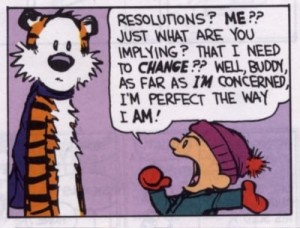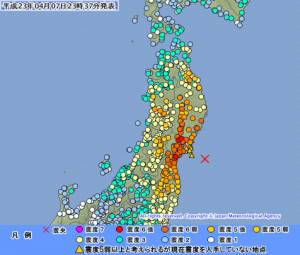Language learning, cultural imperialism, fun?
This is a great short film (hat tip to Benny Lewis):
I hope there are lots of people like this around the world.
EFL eikaiwa ES extensive reading kids language courses Language learning materials Penguin Kids Readers readers Reading Review reviews school management teaching
by sendaiben
4 comments
Penguin Kids Readers
Resuming our kids’ readers roundup after a brief hiatus 🙂
I received a set of these a couple of weeks ago from the publisher (thanks!). While I appreciate the gesture, it will not affect how I review them here.
Having said that, this is a fantastic new series that has a lot going for it. There are currently 23 readers over six levels of difficulty.
Level 1 (200 headwords)
Level 2 (400 headwords)
Level 3 (600 headwords)
Level 4 (800 headwords)
Level 5 (1000 headwords)
Level 6 (1200 headwords)
As you can see, the jump between levels is fairly minimal, something that is extremely important for beginner and younger readers.
The current titles are all based on Disney films, and the artwork and covers are beautiful. The writing isn’t bad, either, in that the books actually tell coherent stories. That is often a problem with low-level readers based on films or TV content -they try to fit in too much with a minimal wordlist so the stories end up not making sense. Luckily that is not the case here. In many of the books they have taken just one scene from a film and told that. Our students found the books really attractive due to the topics, but there was enough of a spread that they had not seen all of the movies featured.
Another thing I liked were the simple exercises in the back of the books. They have pre-reading and post-reading questions that are visual and fairly easy -perfect to do in class after reading or to check out of class reading. If anything, I would have liked to see this section be slightly longer.
Apparently the series will end up having twelve books at each level, and there will be different content in the next wave of books (ie not just Disney).
Overall, this is a fantastic new resource. We ended up ordering two more sets, and I’m really looking forward to the release of the rest of the books in this series.
curriculum EFL evaluation expectations language courses Language learning teaching testing university
by sendaiben
leave a comment
New (Academic) Year’s Resolutions
Now that we are two three months into 2010 2012 (can you tell when I started writing this post?), it seems like a good time to think about new year resolutions. I didn’t make any specific ones this year, but I would like to make some for the next academic year.
In Japan the academic year runs from April to March, and at universities at least classes finish in February, allowing teachers some much-needed downtime to do admin, write papers, and think about next year’s classes.
So what am I going to focus on next year?
One of my priorities as a teacher and learner is effectiveness, or maximising results. I want to continue making my classes as effective as possible. I define effectiveness as the amount of learning over a certain time.
For my university classes, I am working off the following assumptions:
1. my students have already studied enough grammar
2. we only have a maximum of 22 hours together
3. my students actually want to learn English
4. most of my students don’t know how to get better at English
5. there are things I can teach my students that will help them improve their English
6. tests and quizzes, while very useful for assigning letter grades, are not very helpful
I am going to be teaching the following classes next year:
Reading
Communication
Listening
Presentation
I have already submitted my syllabi and know more or less what we are going to be doing, but I would be very interested to hear any advice or ideas about what I should do in each of these. I’ll be posting the contents later in the week. Please comment below.
In Search of Sanuk (why you might care about an obscure charity in Thailand)
I first saw this video in December last year. Something about it really touched me, so I sent a small donation via the website.
A couple of days later, Dwight emailed me to say thanks. Something about him, and the project, stuck with me though, so I emailed him again to see if he could meet up.
Last week, I managed to make it to Bangkok and we went out to dinner. I wanted to know more about his project, and more importantly I wanted to see if he was for real.
Dwight started off like many of us, teaching English in Bangkok. Unlike many of us though, he noticed a serious social problem and decided to make the world better, one family at a time. Dwight works with refugees in Thailand, people who are in Thailand illegally, unwelcome and ignored, with no source of support. His In Search of Sanuk organization (sanuk means ‘fun’ in Thai) aims to help them financially and more importantly socially. Maybe it’s because I am an immigrant here in Japan, but I feel what he is doing is extremely important.
I am very comfortable here, but I have had tough times, even with all the support and advantages I have enjoyed. I cannot imagine doing the same thing with no support, all the while trying to avoid the authorities’ attention. I think what Dwight it doing is so important that I would like to ask you to check it out, and consider sending him a donation or visiting the project if you are ever in Bangkok. In Search of Sanuk can be found by clicking on the following links: Facebook page, website, and Youtube channel.
Remembering the earthquake
Yesterday marked one year since the Great East Japan Earthquake.
Living here in Sendai it was quite a big deal for us, although my family and I were extremely fortunate not to lose any close friends or family members. Many were not so fortunate.
There are still reminders of the damage all around us. Walking to work this morning, I passed a boarded up business: the building unrepaired and the signs taken down. Flying into Sendai airport yesterday, the full extent of the devastation is clear: the coastline a tabula rasa, devoid of buildings or people. On the drive home the expressway cuts through flooded rice fields: it will be years before the sea salt is leeched out and they can be used again.
Experiencing a major disaster is different for everyone. Normally it is something personal: the death of a loved one, the loss of a job, a crippling accident. This time we all experienced it together, and yet each person reacted in their own way. There is almost an illusion of commonality, but deep down everyone’s reality is different.
I’m not sure how I feel about the news on TV, the postings on Facebook, and the emails sent to lists. In a way I’m glad that people haven’t forgotten, that Tohoku remains in people’s thoughts. On the other hand I feel this is quite a private topic for me. In the aftermath of the earthquake last year I did talk about it (you can see my blog posts Part One, Part Two, and Part Three on our experience immediately after 3.11). However, since then I have felt the need to talk about it less and less. I still find myself getting emotional watching documentaries about the ‘triple disaster’, and it will be years before we find out if radiation fears were warranted or not. The Great East Japan Earthquake Disaster is ongoing in many ways. It is both mundane, in that it is part of every day life here, and extraordinary, in that it was (hopefully) a once-in-a-lifetime event. The media will probably stay on the story for now, and people are going to keep talking about it online.
But I’m not sure I want to. In a way, I feel it belongs more to those whose lives were irrevocably changed. I was frightened, it was tough, we had to move, it was very stressful, but we got through it. For others though, who lost people close to them, whose towns were literally wiped off the map, who are still living in temporary accommodation, it’s not just another war story.
I thought this article from the New York Times was beautiful.
*the image at the top of this post is the data for the second earthquake, the one that did more damage to buildings in Sendai but much less overall as it did not trigger a tsunami. One of the thousands of strong aftershocks in the region.


